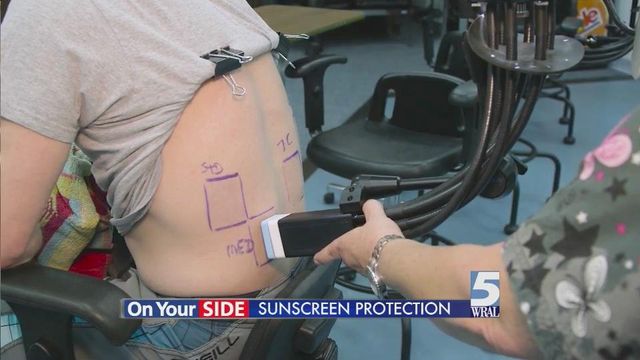Don't get burned: Many sunscreens don't offer advertised protection
Sunscreen is supposed to help protect from wrinkles, brown spots and, most importantly, skin cancer. However, based on new tests of more than 60 sunscreens, products may not deliver the protection that labels advertise.
Posted — Updated“People look at the SPF, or sun protector factor, and that’s very important, but it’s only one part of protecting your skin from the sun,” said Trisha Calvo, Consumer Reports health editor.
SPF is a measure of how well a sunscreen shields skin from UVB rays, which penetrate the top layer of the skin and are the number one cause of sunburns. UVA rays penetrate deeper into the skin and can contribute to wrinkles.
Both UVA and UVB rays can increase the risk of skin cancer.
Calvo said Consumer Reports recommends using a broad-spectrum sunscreen so you’re protected against both UVA and UVB rays.
For the UVB tests, water-resistant sunscreen was applied to the testers’ backs before they soaked in a tub with their backs exposed to UVB light. The following day, the patches were checked for redness. More than 40 percent of the products did not have the SPF advertised.
However, some of the tested sunscreens passed the tests and are a good value.
Among the top rated sunscreen lotions were Pure Sun Defense SPF 50 for around $6, Equate Ultra Protection SPF 50 for around $8 and No-Ad Sport SPF 50 for $10.
Consumer Reports says adults should use about 2.5 half tablespoons of lotion. As for sprays, Consumer Reports suggested that people should use as much spray as they can rub in to the skin, and then repeat.
There are concerns about the risk of inhaling sprays, and Consumer Reports suggests avoiding them on children. Never use the sprays on the face; spray on the hands and then apply to the face.
• Credits
Copyright 2024 by Capitol Broadcasting Company. All rights reserved. This material may not be published, broadcast, rewritten or redistributed.





